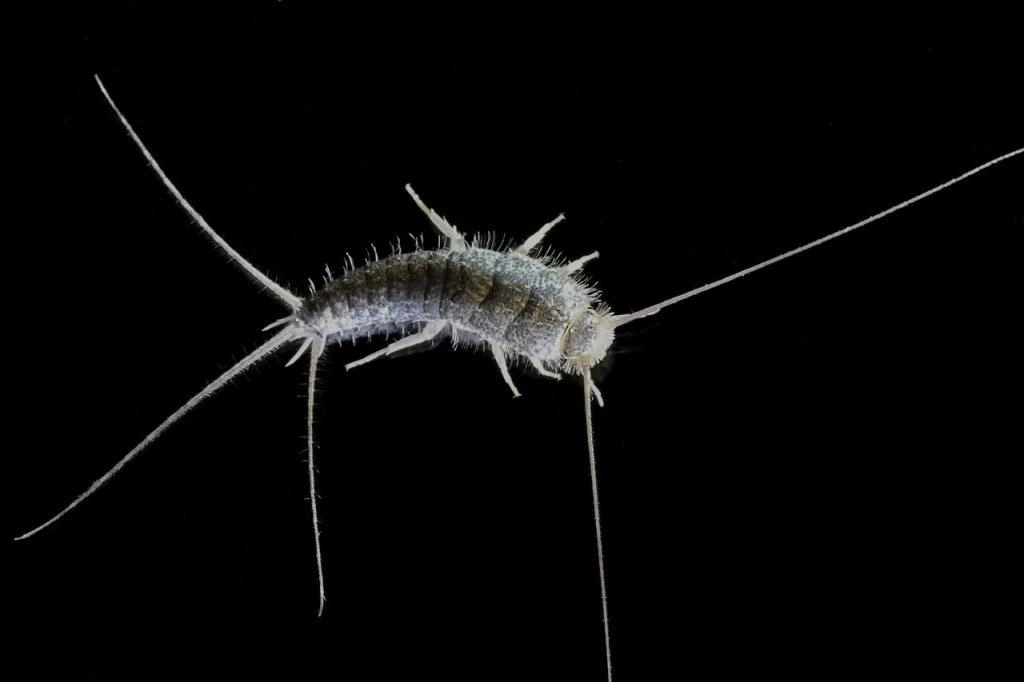Silverfish (Lepisma saccharina) are small, wingless insects that have been around for millions of years, surviving through various environmental changes and adapting to human dwellings. Despite their ancient origins, silverfish remain a common household pest that can cause damage to your belongings and discomfort in your home. In this article, we will explore everything you need to know about silverfish, including their characteristics, why they invade homes, and most importantly, how to get rid of them.
What Are Silverfish?
Silverfish are nocturnal insects that are easily recognizable by their silvery-gray appearance, elongated bodies, and fish-like movement. They typically measure between 12 to 19 millimeters in length, with scales covering their bodies that give them a shiny, metallic look. Their distinctive “wiggling” motion as they move is what inspired their name, as they resemble a small fish swimming through water.
These insects thrive in damp, humid environments, making basements, bathrooms, kitchens, and attics ideal places for them to live. Silverfish are not dangerous to humans but can cause significant damage to property, especially paper-based items such as books, wallpaper, and food supplies.
Why Do Silverfish Infest Homes?
Silverfish are drawn to homes that provide favorable conditions for their survival. Here are the key factors that attract silverfish:
Humidity: Silverfish thrive in areas with high humidity levels, generally between 75% and 95%. Moist environments, such as bathrooms and basements, are often the primary spots where silverfish are found.
Food Sources: Silverfish feed on a wide range of organic materials. They have a preference for carbohydrates and proteins, which they find in paper, glue, clothing, wallpaper, and even certain food items like cereals and oats.
Dark and Hidden Spaces: Silverfish tend to shy away from light, preferring dark, secluded areas where they can remain undisturbed. They often hide in cracks, crevices, and behind appliances.
How to Identify Silverfish
Silverfish are relatively easy to identify once you know what to look for. Here are some common signs of an infestation:
Visible Silverfish: These pests often move quickly and are usually seen darting across floors, walls, or ceilings at night.
Damaged Items: If you notice small, irregular holes or jagged edges on paper, books, or fabric, it could be a sign of silverfish feeding.
Silverfish Droppings: Tiny, black pepper-like droppings are often found in areas where silverfish are active.
Molting Skins: Silverfish shed their skins as they grow, and you may find discarded exoskeletons in hidden areas.
How to Prevent a Silverfish Infestation
Preventing a silverfish infestation requires making your home less appealing to these pests. Here are several proactive steps you can take:
Reduce Humidity: Since silverfish thrive in damp conditions, reducing the humidity in your home is the first step in preventing an infestation. Use a dehumidifier, especially in basements, bathrooms, and kitchens.
Seal Cracks and Gaps: Check your home for any cracks or gaps in walls, floors, windows, or doors. Seal these with caulk or weather stripping to prevent silverfish from entering.
Store Food Properly: Silverfish may be attracted to food sources in your pantry or cabinets. Store dry food items in airtight containers to keep them secure.
Clean Regularly: Regular cleaning and vacuuming will help remove food particles, dust, and any eggs or silverfish that may be hiding in your home.
Control Moisture: Fix any leaks in pipes, faucets, or appliances that may contribute to excessive moisture. Ensure proper ventilation in damp areas.
Remove Clutter: Silverfish often hide in piles of paper, clothes, or boxes. Reducing clutter in basements and attics can minimize potential hiding spots for silverfish.
How to Get Rid of Silverfish
If you have a silverfish infestation in your home, it’s important to act quickly to prevent further damage. There are several methods to eliminate these pests, including:
1. Natural Remedies
Diatomaceous Earth: This powder is made from the fossilized remains of tiny marine organisms. When silverfish come into contact with it, the fine particles scratch their exoskeletons, causing dehydration and death. Sprinkle diatomaceous earth in areas where silverfish are active.
Essential Oils: Silverfish dislike strong smells like lavender, citrus, or cedarwood. You can use essential oils to repel them by adding a few drops to cotton balls and placing them in strategic areas around your home.
Cedar Chips: Cedarwood is a natural insect repellent. You can place cedar chips in your closets, attics, or cupboards to deter silverfish.
2. Chemical Solutions
Insecticides: If natural remedies don’t work, you can use insecticides specifically designed for silverfish. Be sure to follow the manufacturer’s instructions carefully and consider using sprays that target cracks, crevices, and other hidden areas where silverfish are likely to hide.
Bait Traps: You can also use bait traps, which attract silverfish and then trap them in a sticky substance. These traps can help you monitor the extent of the infestation.
3. Professional Pest Control
For larger or persistent infestations, it may be necessary to call in a professional pest control service. Exterminators can identify the source of the infestation and use stronger treatments to eradicate the pests effectively.
Conclusion
Silverfish may be small, but they can be a big nuisance in your home. By understanding why they invade your living space, how to spot them, and the best ways to prevent and eliminate them, you can protect your belongings and enjoy a pest-free environment. With the right strategies, you can keep these ancient pests at bay and maintain a clean, comfortable home for you and your family.
Remember, a little preventive maintenance goes a long way, so keep humidity in check, seal entry points, and stay vigilant in cleaning your home to avoid silverfish and other common pests.


















